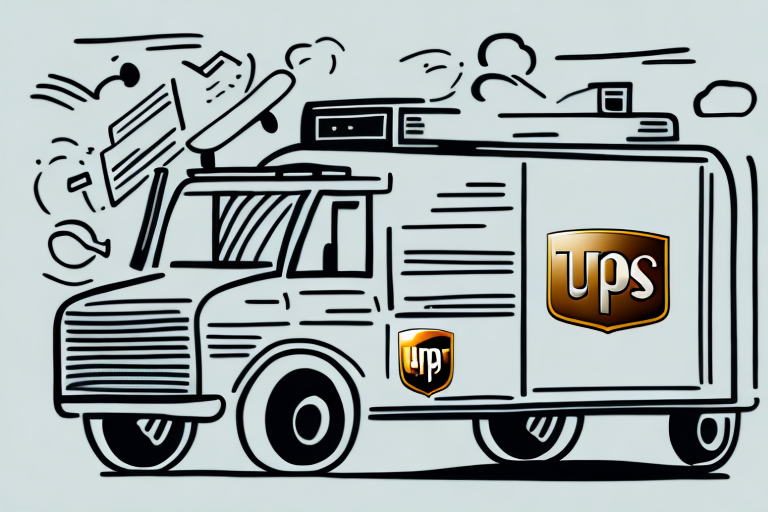Understanding UPS Textbook Shipping Rates
Shipping textbooks can be a hassle, especially when they need to travel long distances. UPS stands out as a popular choice for textbook shipments due to its reliability and comprehensive services. In this article, we delve into the factors influencing UPS textbook shipping rates, methods to calculate them, tips for saving on shipping costs, and more, ensuring you have all the information needed for efficient textbook shipping.
Why UPS is a Preferred Choice for Textbook Shipping
UPS is renowned for its dependable and secure shipping services, making it a favored option for shipping textbooks. Whether you’re a student or a business owner, ensuring your textbooks arrive without damage or delay is crucial. UPS's extensive network and solid reputation contribute to its popularity in the textbook shipping sector.
One of the standout features of UPS is its robust tracking system. With UPS, you can monitor your package in real-time, offering peace of mind knowing the exact location of your textbooks at any moment. This level of tracking is vital for valuable and essential academic or business materials.
Additionally, UPS offers a variety of shipping options tailored to different needs and budgets. Whether you require overnight shipping or a more economical multi-day option, UPS provides flexibility that accommodates diverse shipping requirements, making it easier to plan and ensure timely deliveries.
The Factors Influencing UPS Textbook Shipping Rates
Several elements determine the cost of shipping textbooks with UPS:
- Number of Books: The more textbooks you ship, the higher the overall cost.
- Shipping Distance: Longer distances generally incur higher charges.
- Package Weight: Heavier shipments result in increased shipping rates.
- Packaging Type: The materials and type of packaging used can affect costs.
- Shipping Speed: Faster shipping options like overnight delivery are more expensive.
- Seasonal Demand: Peak times, such as the start of a school year, may see higher rates due to increased demand.
- Destination: Shipping to remote or rural areas can lead to additional transportation costs.
Understanding these factors can help you make informed decisions to manage and potentially reduce your shipping expenses.
Calculating UPS Textbook Shipping Rates
To accurately calculate UPS shipping rates for textbooks, consider the following factors:
- Package Weight and Dimensions: Heavier and larger packages cost more to ship.
- Destination: Domestic vs. international shipping rates vary significantly.
- Number of Books: More books increase the overall weight and size of the package.
- Shipping Speed: Selecting expedited or overnight shipping options will raise the cost.
- Packaging: Using efficient packaging like flat-rate boxes can help manage costs.
UPS offers a [shipping calculator](https://www.shipscience.com/understanding-ups-shipping-rates-for-your-business-2/) on their website, allowing you to estimate costs based on your specific shipment details. Additionally, businesses and frequent shippers can benefit from discounts, so exploring these options is advisable if you plan to ship textbooks regularly.
Comparing UPS Textbook Shipping Rates with Other Carriers
Before finalizing your shipping carrier, it’s prudent to compare UPS rates with other providers like USPS and FedEx. Different carriers may offer competitive rates depending on the route and specific services required. Evaluating factors such as cost, delivery times, and additional services like tracking and insurance can help you choose the best option for your textbook shipments.
Some carriers might have restrictions on package size or weight, so it's essential to review their policies to ensure they meet your shipping needs. Leveraging comparison tools and obtaining quotes from multiple carriers can lead to significant savings and better service selection.
Tips for Reducing UPS Textbook Shipping Costs
- Choose Slower Shipping Options: Opting for ground or standard shipping can significantly reduce costs compared to expedited services.
- Efficient Packaging: Use flat-rate boxes or minimize packaging materials to lower weight and size, thereby reducing shipping fees.
- Bulk Shipping: Shipping textbooks in bulk can qualify you for volume discounts.
- Enroll in UPS Programs: Signing up for a UPS account and utilizing programs like [CampusShip](https://www.shipscience.com/a-complete-guide-to-ups-campusship-for-e-commerce-businesses/) can provide access to discounted rates and other benefits.
- Compare Different Carriers: Regularly compare rates with other shipping providers to ensure you’re getting the best deal.
Implementing these strategies can lead to substantial savings, especially for frequent shipments.
Ensuring Safe Arrival of Your Textbooks
Proper packaging is critical to prevent damage during transit. Use sturdy boxes and ample cushioning materials like bubble wrap to protect your textbooks. Clearly label your packages with accurate addresses and include both sender and recipient contact information to minimize the risk of misdelivery.
Additionally, consider using UPS’s insurance options for valuable shipments. This provides an extra layer of protection, ensuring you are covered in case of loss or damage.
Avoiding Common Mistakes When Shipping Textbooks with UPS
- Poor Packaging: Inadequate packaging can lead to damaged books. Always use robust materials and sufficient padding.
- Incorrect Addressing: Ensure that all address details are accurate and complete to avoid delivery delays.
- Last-Minute Shipments: Plan and schedule your shipments in advance to account for any unexpected delays.
- Choosing the Wrong Shipping Method: Select a shipping option that balances cost and delivery speed based on your needs.
- Neglecting to Label Properly: Clearly label packages with all necessary information to facilitate smooth delivery.
Being mindful of these common errors can enhance the efficiency and reliability of your textbook shipping process.
Understanding UPS Tracking for Textbook Shipments
UPS provides comprehensive tracking tools to monitor your textbook shipments effectively. Features include:
- Online Tracking: Access real-time updates on your package’s status through the UPS website.
- Email Notifications: Receive automatic updates about your shipment’s progress and any changes in status.
- UPS Mobile App: Track multiple shipments on the go and receive instant notifications.
While UPS tracking is highly reliable, there may be instances where updates are delayed. If your tracking information hasn’t updated for an extended period, contacting UPS customer service is recommended to resolve any issues promptly.
The Advantages of Using UPS for International Textbook Shipping
For international shipments, UPS offers reliable and cost-effective services to virtually any global destination. Benefits include:
- Extensive Network: UPS’s global presence ensures efficient delivery to international locations.
- Advanced Tracking: Real-time tracking allows you to monitor your shipment from departure to arrival.
- Sustainability Initiatives: UPS’s commitment to eco-friendly practices, such as using alternative fuels and optimizing delivery routes, helps reduce your carbon footprint.
These advantages make UPS a strong candidate for international textbook shipping, providing both reliability and environmental responsibility.
Top-Rated Packaging Options for UPS Textbook Shipments
Choosing the right packaging is essential for protecting your textbooks during transit. Recommended packaging options include:
- Heavy-Duty Boxes: Provide maximum protection against impacts and stacking.
- Bubble Wrap: Adds cushioning to prevent damage from shocks and vibrations.
- Padded Envelopes: Suitable for smaller shipments, offering lightweight protection.
Additionally, ensure your packages are clearly labeled with accurate shipping information and include a packing slip or invoice to facilitate easy identification upon arrival.
Handling Lost or Damaged Textbooks During UPS Shipping
In the rare event your textbooks are lost or damaged during UPS shipping, it’s crucial to act swiftly:
- File a Claim: Provide all necessary details and documentation to UPS to initiate the claims process.
- Understand Time Limits: For domestic shipments, claims must be filed within nine months of delivery. For international shipments, the timeframe is typically 60 days.
- Inspection Requirements: UPS may require an inspection of the damaged package and its contents before processing the claim.
Promptly addressing issues with proper documentation ensures a smoother resolution to any shipping problems.
Streamlining the UPS Textbook Shipping Process for Your Business or Organization
If your business frequently ships textbooks, streamlining the process can save time and reduce costs. Consider the following strategies:
- Schedule Pickups: Regularly scheduled pickups can save time and ensure consistent shipping practices.
- Use a UPS Account: Managing shipments through a UPS account provides access to discounts and shipping tools.
- Implement Shipping Software: Automated shipping software helps manage multiple shipments efficiently, reducing manual errors and administrative tasks.
By optimizing your shipping workflow, you can enhance efficiency, lower costs, and ensure your textbooks are delivered reliably.
By understanding the factors that influence UPS textbook shipping rates and applying the tips provided, you can effectively manage your textbook shipments, ensuring they arrive safely and cost-effectively.






















